
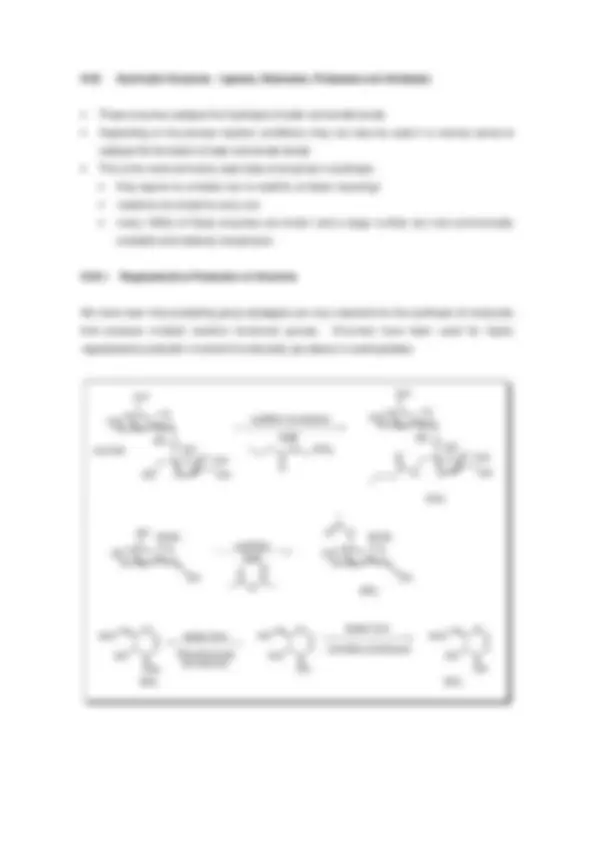
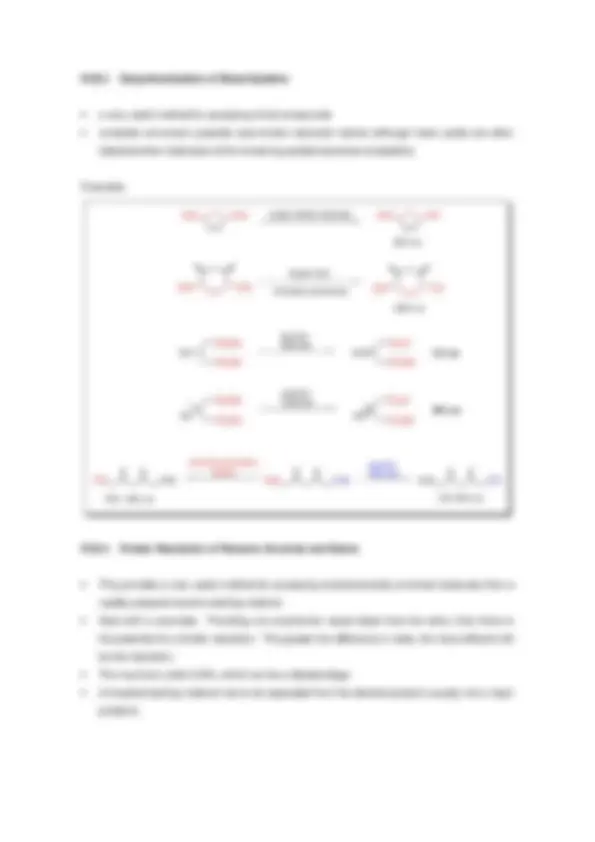
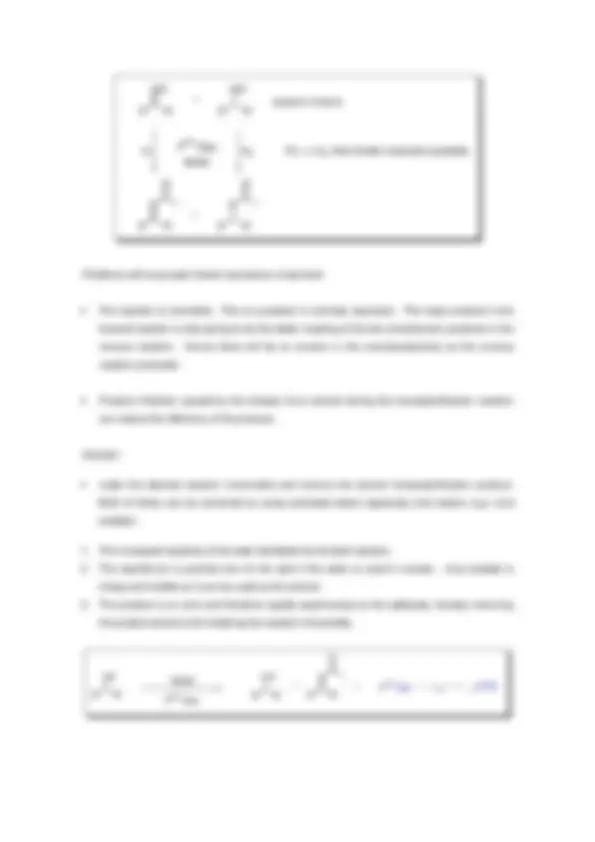


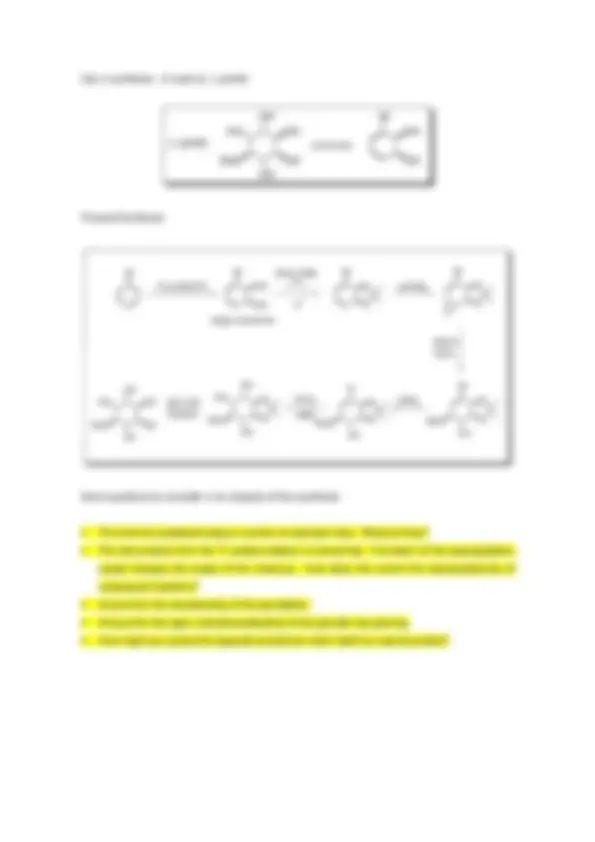
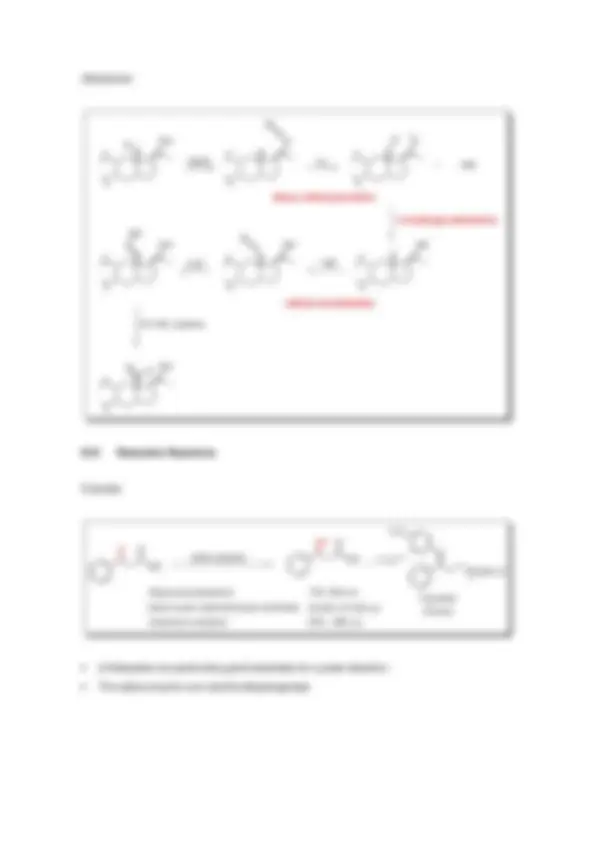



Study with the several resources on Docsity

Earn points by helping other students or get them with a premium plan


Prepare for your exams
Study with the several resources on Docsity

Earn points to download
Earn points by helping other students or get them with a premium plan
Community
Ask the community for help and clear up your study doubts
Discover the best universities in your country according to Docsity users
Free resources
Download our free guides on studying techniques, anxiety management strategies, and thesis advice from Docsity tutors
The role of enzymes in organic synthesis, focusing on their advantages, useful properties, and applications in regioselective protection of alcohols, desymmetrisation of meso systems, and kinetic resolution of racemic alcohols and esters. It also covers biomimetic artificial enzymes and reduction reactions.
Typology: Study notes
1 / 14

This page cannot be seen from the preview
Don't miss anything!









IX Biological Methods of Control
Objectives
By the end of this section you will:
Recommended Reading: C.-H. Wong, G. M. Whitesides, Enzymes in Synthetic Organic Chemistry , Tetrahedron Organic Chemistry Series Vol 12, Pergamon, Oxford, 1994.
IX.A Enzymes in Synthesis
Nature operates in a chiral environment; highly selective (chemo-, regio- and stereo-) transformations are routine. Enzymes - proteins that catalyse reactions in vivo - are Nature's catalysts for most of these transformations. Synthetic chemists have not surprisingly isolated and purified many enzymes from a range of organisms, and used them in the laboratory on both natural and unnatural substrates, often to great effect.
Advantages and useful properties of enzymes:
Disadvantages and some solutions.
i) Substrate specificity
Enzymes can exhibit extremely high substrate specificities, which can be a problem if the enzyme doesn't accept your substrate. However, by screening a wide range of enzymes it is sometimes possible to identify an enzyme that will accept the substrate.
ii) Enzyme stability
Enzymes usually operate in an aqueous environment; they therefore tend to be more unstable in the organic solvents which are often required to solubilise the reacting substrate. The stability of enzymes in organic solvents depends on the hydrophilicity of the enzyme - hydrophilic enzymes tend to be less stable in organic solvents. However careful choice of solvent can help minimise these problems: immiscible, non polar solvents often give the best results. Increased enzyme stability can also be achieved by immobilising the enzyme on a support. This has the added advantage of providing a simple purification procedure - the enzyme can be filtered off and recovered at the end of the reaction.
iii) Additives
Some enzymes require co-factors to operate. While co-factor recycling is possible it is not always easy.
Water is also often required for enzymes to maintain catalytic activity, which can be a problem if the substrate is water-sensitive. However such problems can be minimised by restricting the amount of water added: it is sometimes possible to use very small amounts of water and still maintain enzyme activity.
iv) Cost - some enzymes are very very expensive.
IX.B.2 Desymmetrisation of M eso Systems
Examples
AcO OAc acetyl choline esterase^ AcO OH 96% ee
AcO OAc (^) AcO OH
98% ee
AcO OAc AcO OH
pig liver esterase 15% 95% ee
porcine pancreatic HO OAc lipase 55% 96% ee
CO 2 Me CO 2 Me HO
pig liver esterase CO^2 H CO 2 Me HO 12% ee
CO 2 Me CO 2 Me
pig liver esterase CO^2 H CO 2 Me HO HO^ 99% ee
Candida cylindracea
lipase from
IX.B.3 Kinetic Resolution of Racemic Alcohols and Esters
k 1 OAc lipase
k (^2)
racemic mixture
if k 1 >> k 2 then kinetic resolution possible
Problems with enzymatic kinetic resolutions of alcohols:
Solution:
R R'
OH (^) lipase OAc R^ R'
OH R R'
O
O
OH CHO
acylation by greater than 10 5.
Can we design a chiral version of this nucleophilic catalyst?
starting point - DMAP
This molecule contains two mirror planes and therefore is achiral; however, if we can eliminate these two elements of symmetry, then we can generate a chiral molecule.
strategy: use π-complexation to destroy the symmetry elements:
ML (^) n
Me 2 N N achiral
Me 2 N N
chiral R
ML (^) n
void (^) top and bottom differentiated left and right differentiated
Convince yourself that π -complexation and introduction of a 2-substituent breaks the mirror planes and generates a chiral molecule. Draw the enantiomer.
Other desirable properties of a nucleophilic catalyst include:
final product:
Fe (^) Ph Ph Ph
Ph
Ph
Me 2 N
Does it work?
O
O O OH 0.5 mol% catalystNEt 3 , 0 °C
OH (solvent)
OH O
93% ee 90% ee
O
8 mmol 0.6 eq. 47% 44%
kinetic resolution
desymmetrisation
OH OH (^) 1 mol% catalyst Ac 2 O, Et 3 N 0 °C,^ t amyl alcohol
OH O
O
99.7% ee, 91% yield
For an excellent review of this chemistry: G. C. Fu, Acc. Chem. Res ., 2000, 33 , 412-420.
Use in synthesis. A route to (−)-pinitol
MeO OH
Br (-)-pinitol
Forward Synthesis:
Br P. putida 39-D
Br
O
O
Br
OH
OH
single enantiomer
MeO OMe
H
m CPBA
Br
O
O O
MeOH Al 2 O (^3)
Br
O
O
OH
MeO
LiAlH (^4)
H
O
O
OH
MeO
OsO (^4) NMO
OH
O
O
OH
MeO
HCl, H 2 O HO acetone
OH MeO OH
OH HO
OH
Some questions to consider in an analysis of this synthesis:
IX.D.2 Enantioselective Baeyer-Villiger Oxidation
O
NADPH, O 2
cyclohexanone monooxygenase from Acinobacter NCIB9871 O
O m CPBA > 98% ee, 80% yield O
O
racemic
IX.D.3 Remote Oxidation
This is a very challenging problem largely unsolved in organic chemistry. However Nature carries out these tranformations routinely (definitely winning this battle!).
Example:
Cunninghamella elegans or Aspergilla niger 3 d, 24 °C
Mechanism
hν
OH NOCl
NO
O H O NO
OH NO
N OH ON OH
OH
H 2 O
O (^) H OH
2% HCl, acetone
1,5-hydrogen abstraction
alkoxy radical generation
radical recombination
H
IX.E Reduction Reactions
Example:
O OEt
O
Beauveria sulfurescens
OH OEt
O
72%, 96% ee
O NH 2 Me Cl
F 3 C
Fluoxetine (Prozac)
whole organism
baker's yeast ( Saccharomyces cerevisiae ) Geotrichum candidum
50-63%, 87-93% ee 65%, >98% ee
Q? How might you prepare prozac (both enantiomers) from the enantiomerically enriched β - hydroxyester?
There are many advantages to using enzymes and related systems in bond-forming processes and as a result biological methods are finding increasing utility in organic synthesis. To date their major application has been mainly in the desymmetrisation of meso diols / esters (lipases) and kinetic resolution of racemic alcohols / esters (lipases), and in the reduction of certain ketones ( e.g. baker's yeast). However with the application of modern purification techniques and an increased understanding of co-factor recycling, a much wider variety of enzymes can now be routinely used in the laboratory. One area which has benefitted greatly from enzymatic reactions is the synthesis of oligosaccharides. We have seen earlier that the multifunctionality of monosaccharides necessitates elaborate and carefully designed protecting group strategies to ensure that only one alcohol is released at a time to permit regioselective glycosylation. Stereoselective glycosylation also relies heavily on the protecting groups around the sugar (especially at C(2)). Nature uses glycosyl transferases (amongst other enzymes) to effect highly chemo-, regio- and stereoselective glycosylation using free sugars. Synthetic chemists now routinely use these enzymes to carry out glycosylation reactions thereby circumventing the use of protecting groups altogether; it appears that the only limitation to this approach to oligosaccharide synthesis is the availability of the appropriate enzyme for carrying out the desired glycosylation.